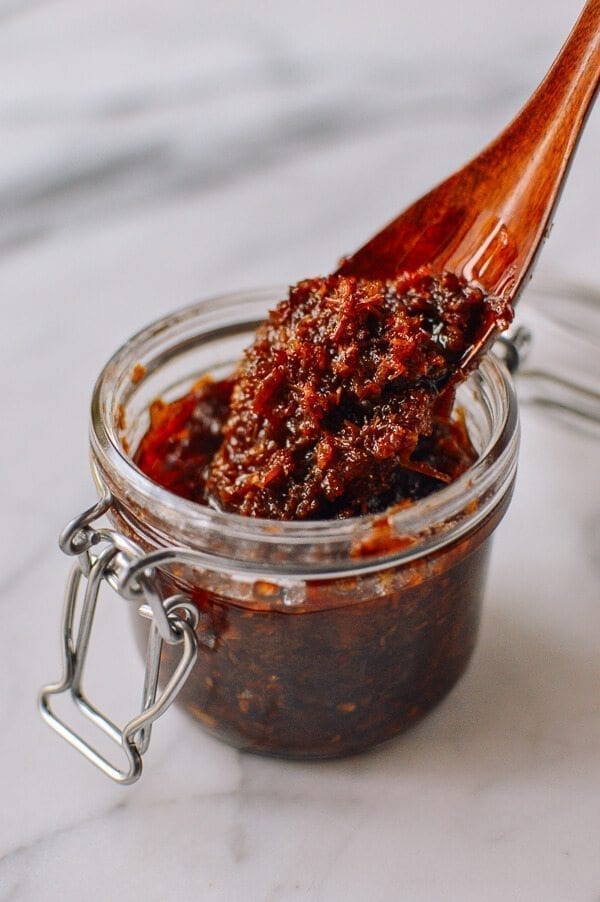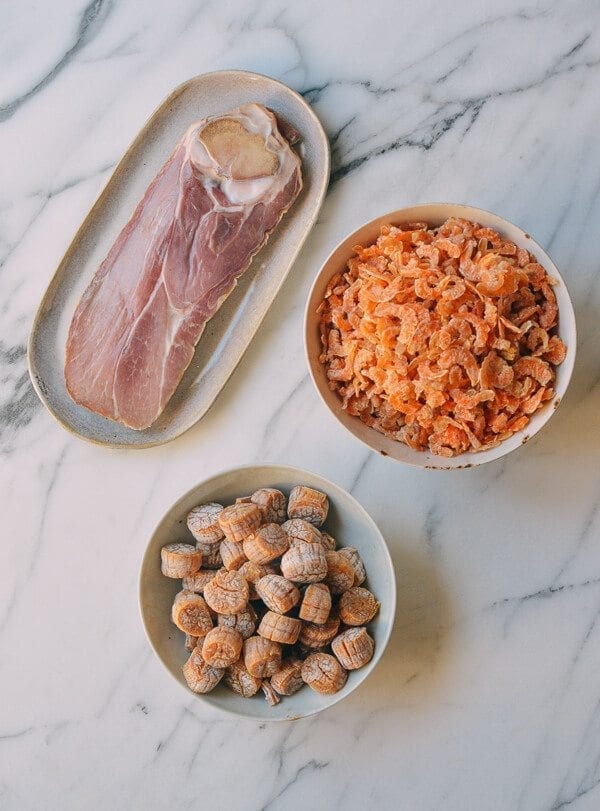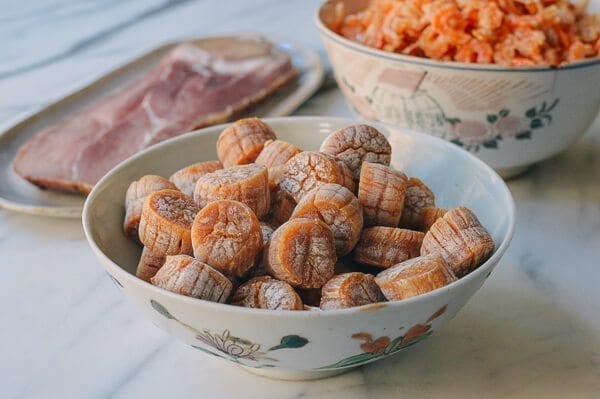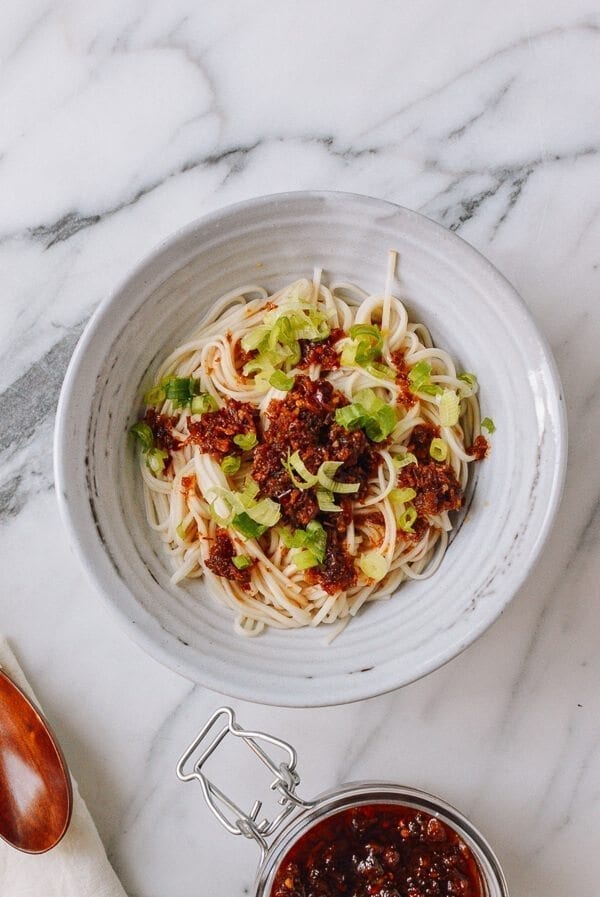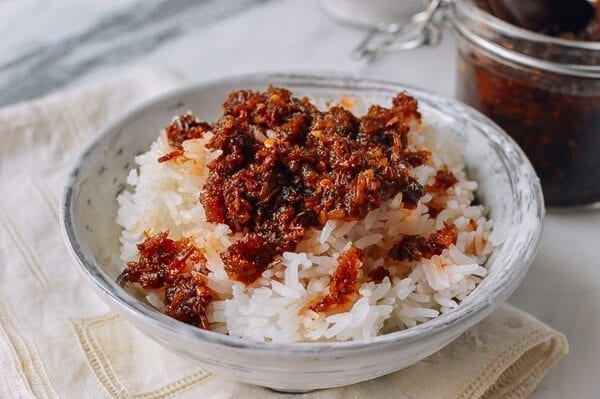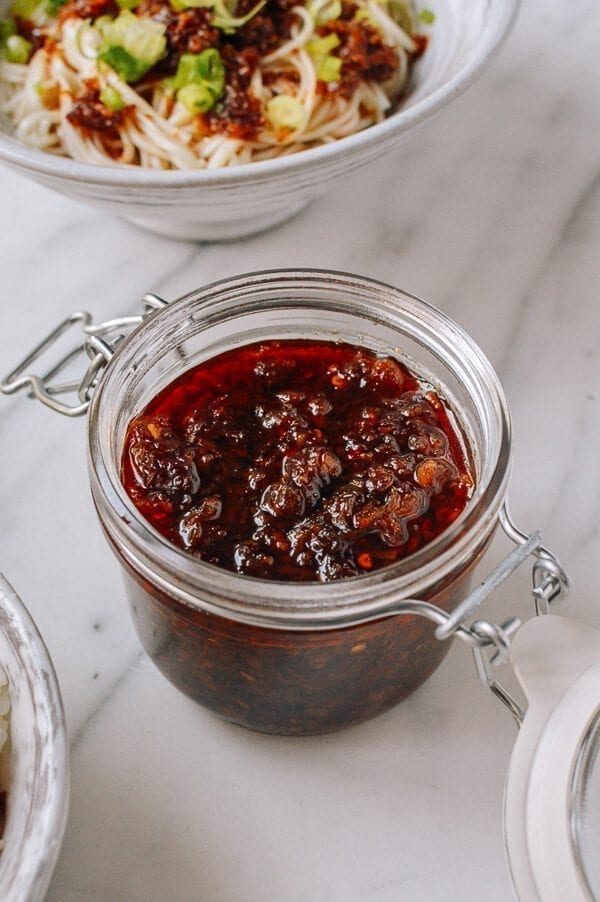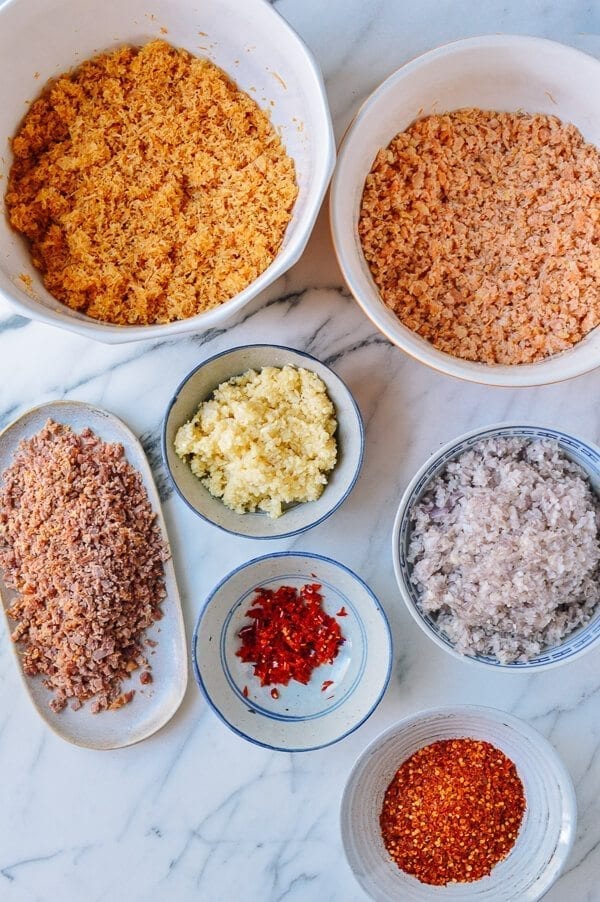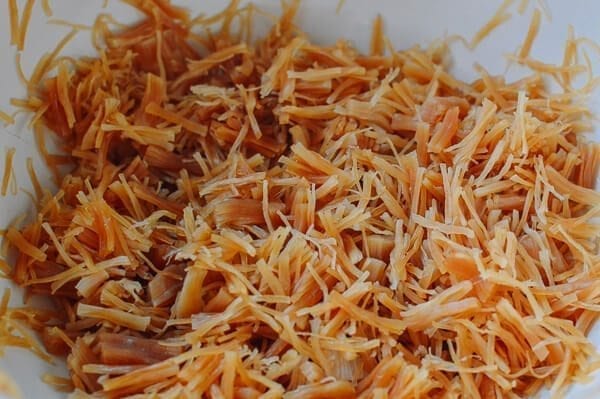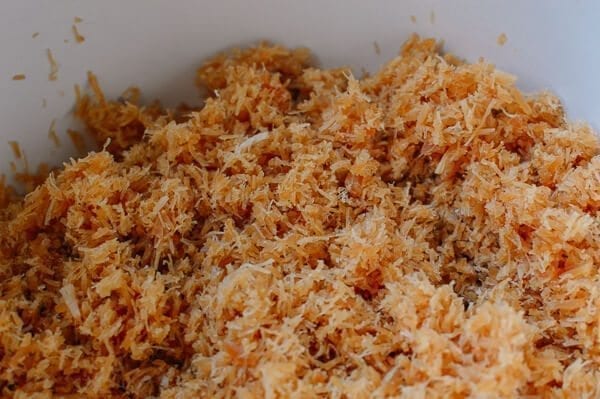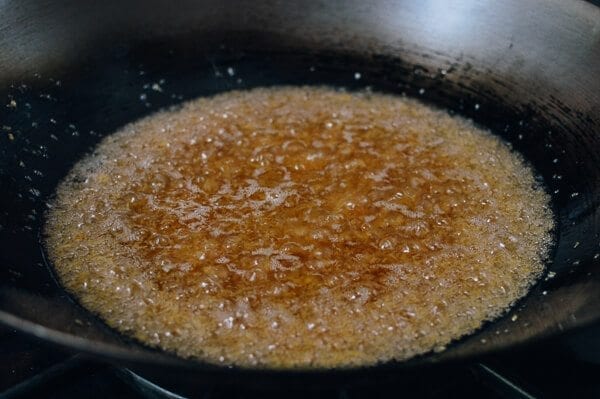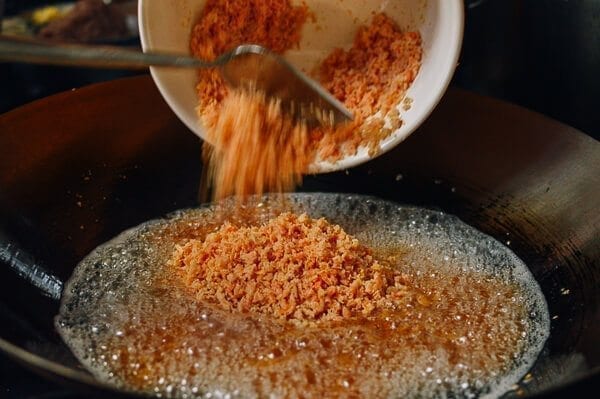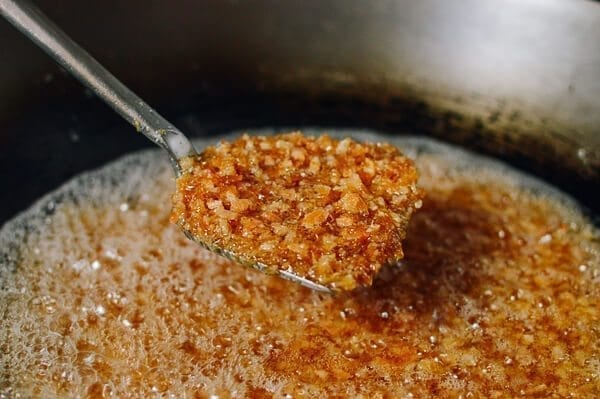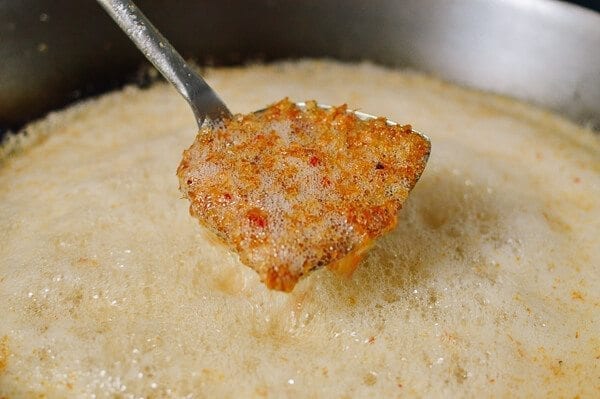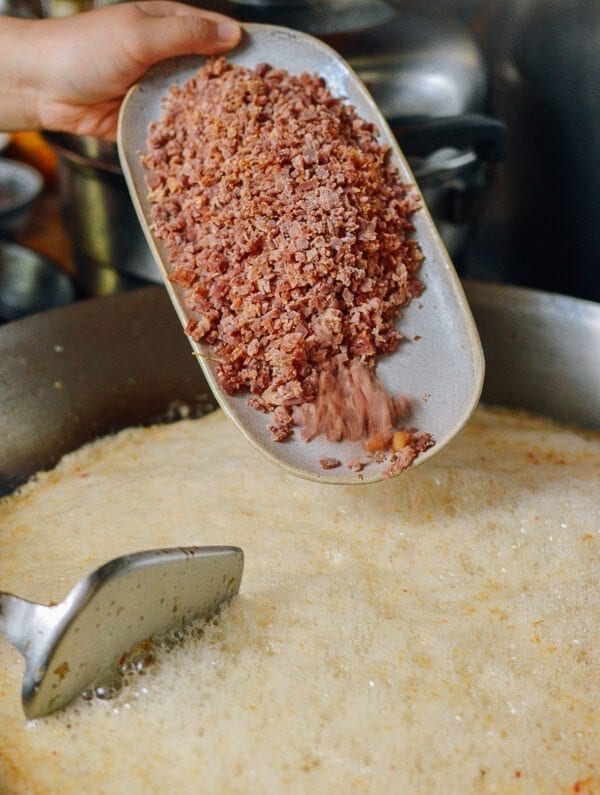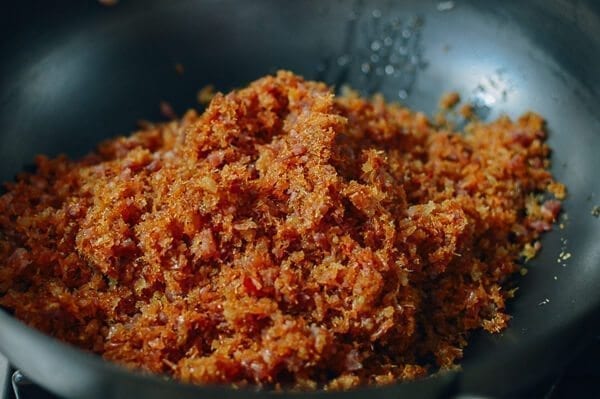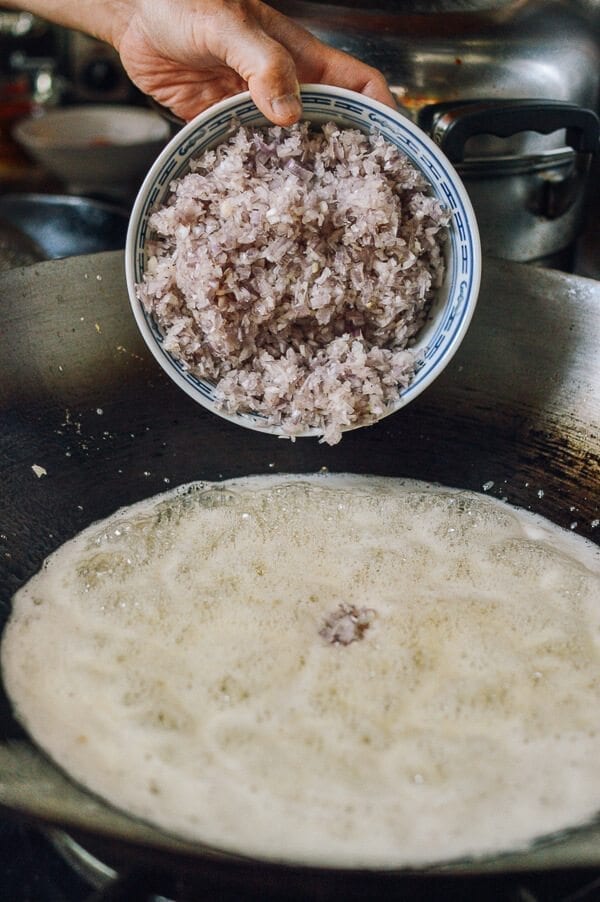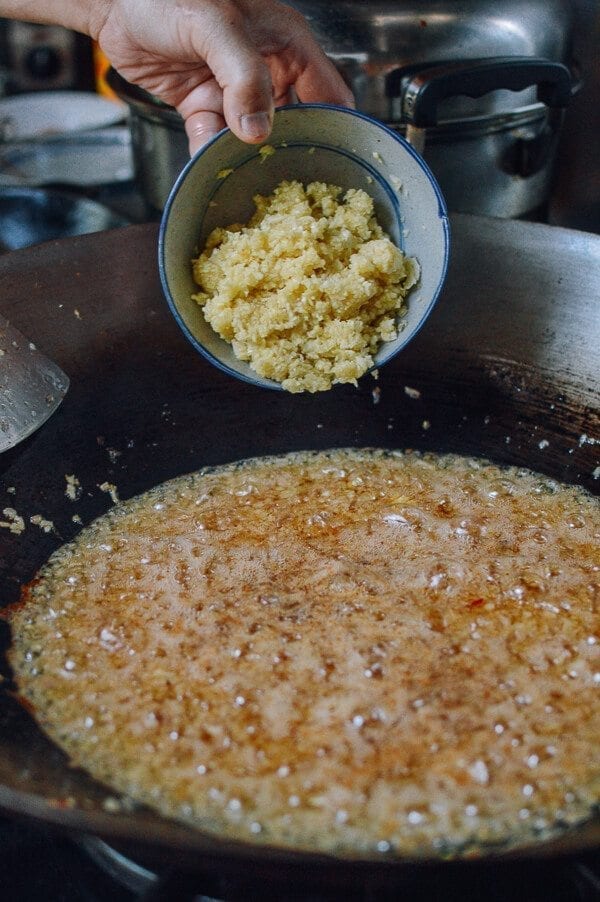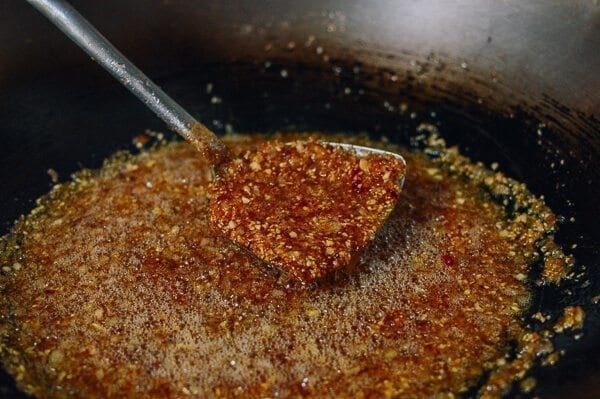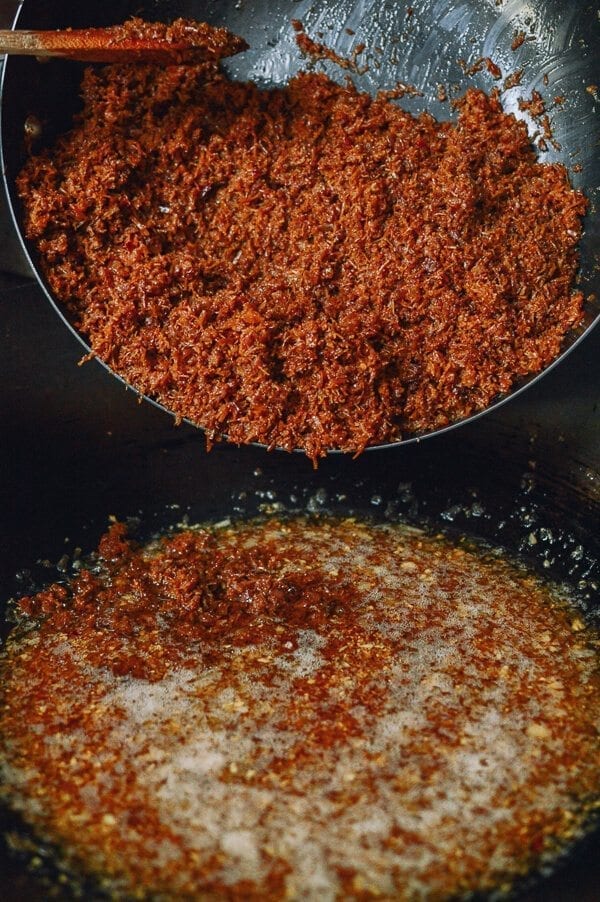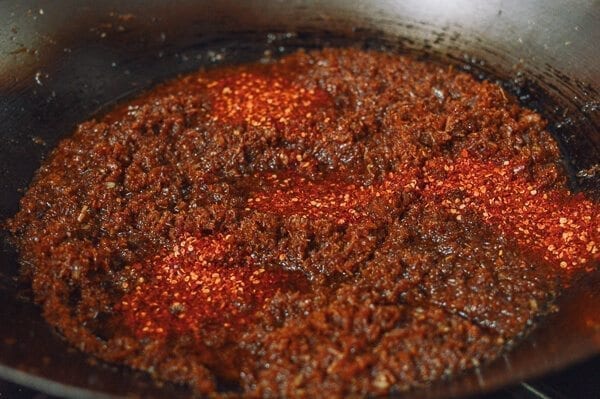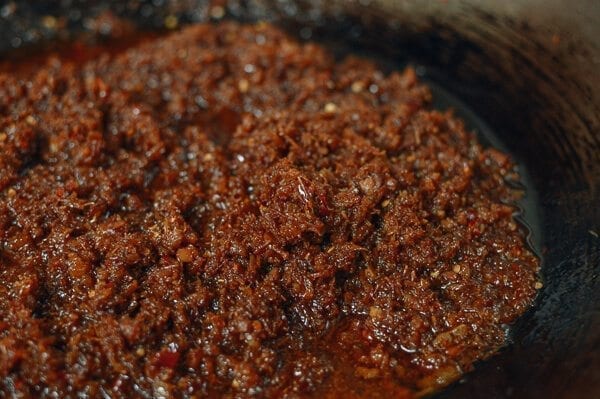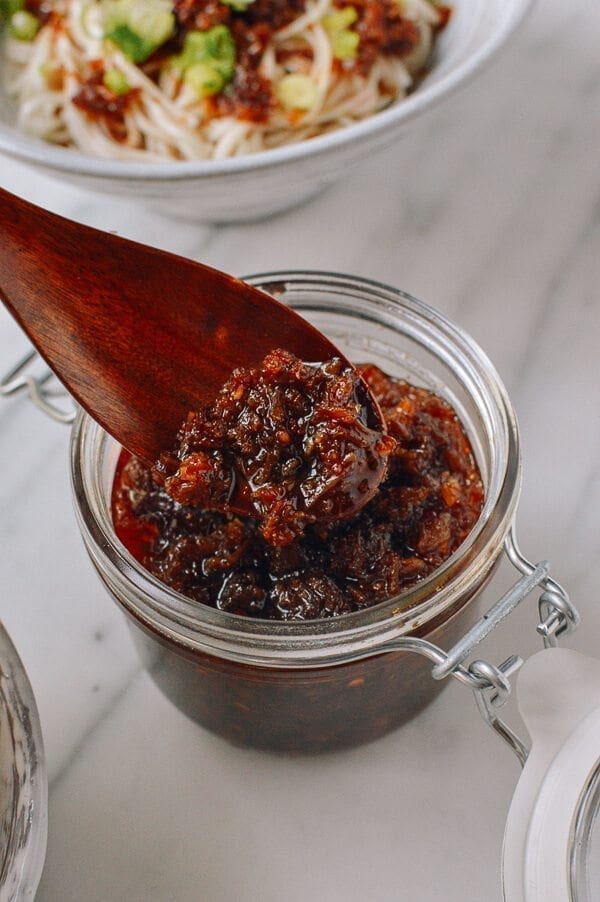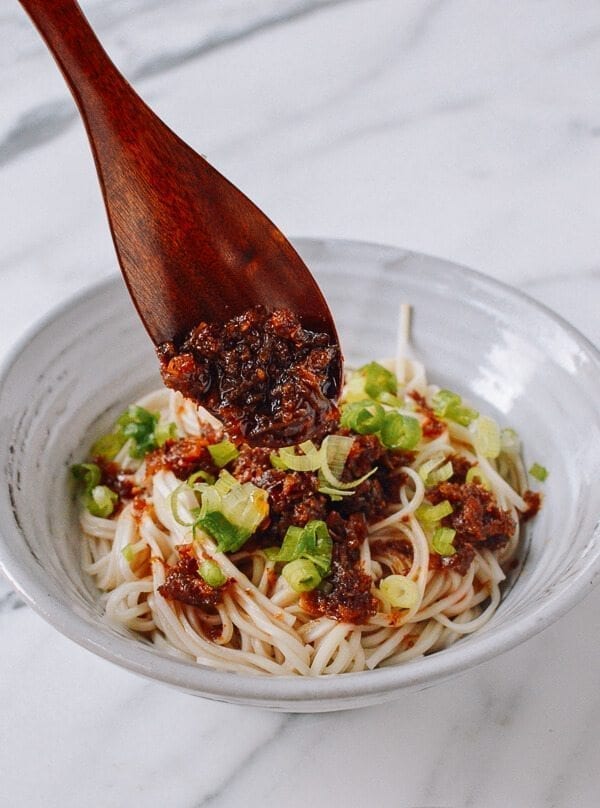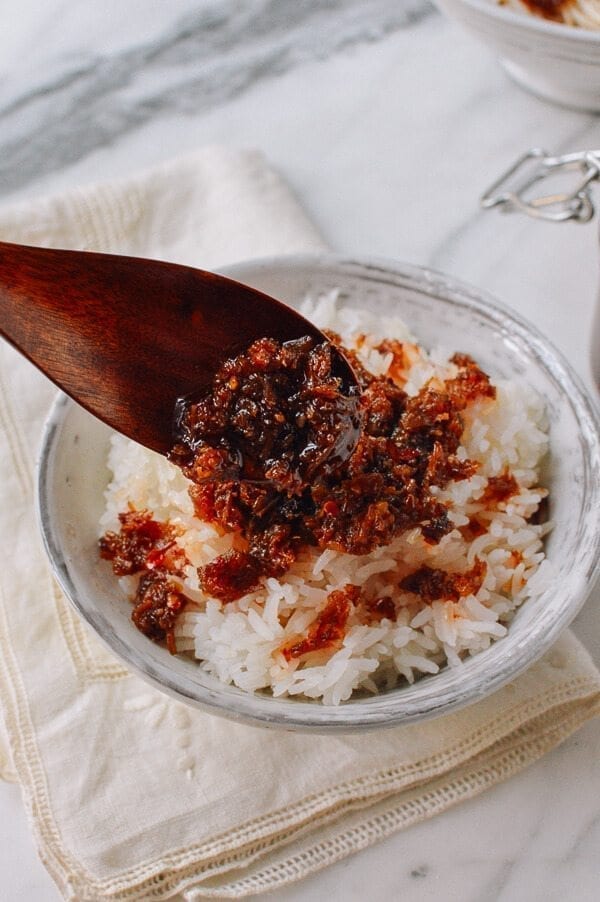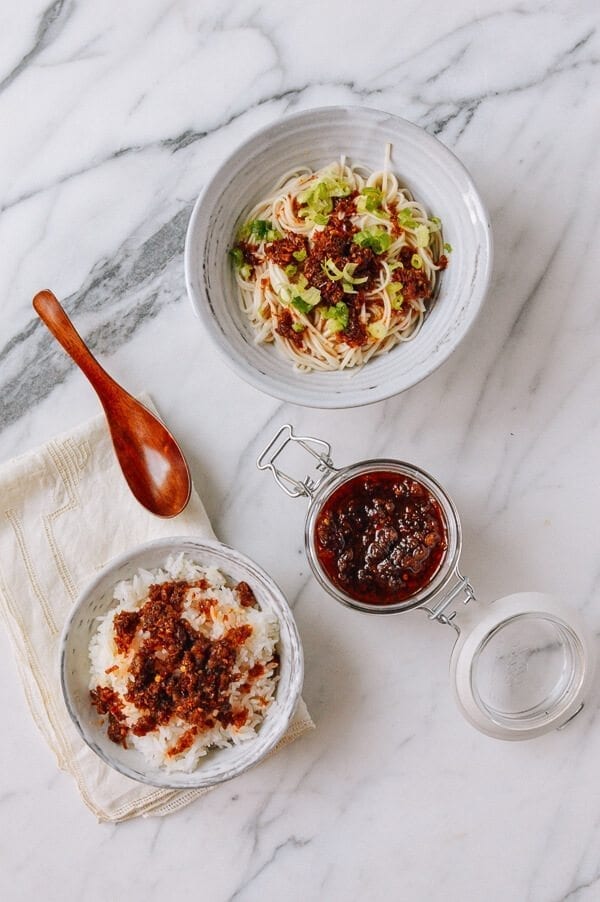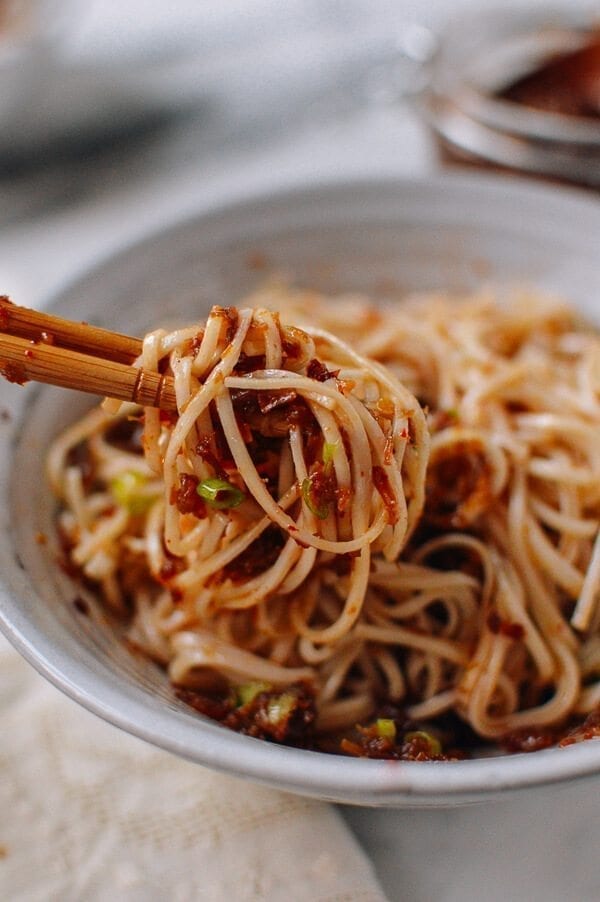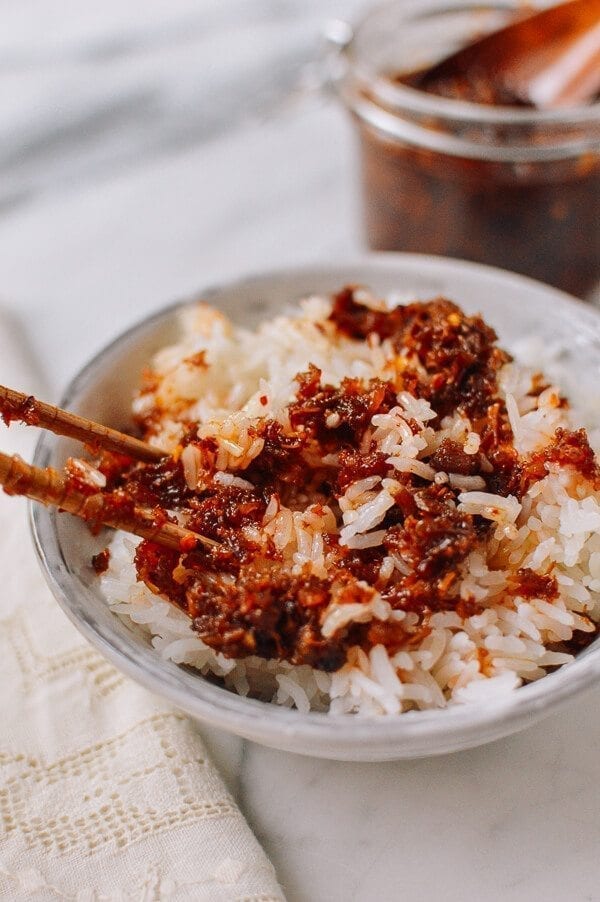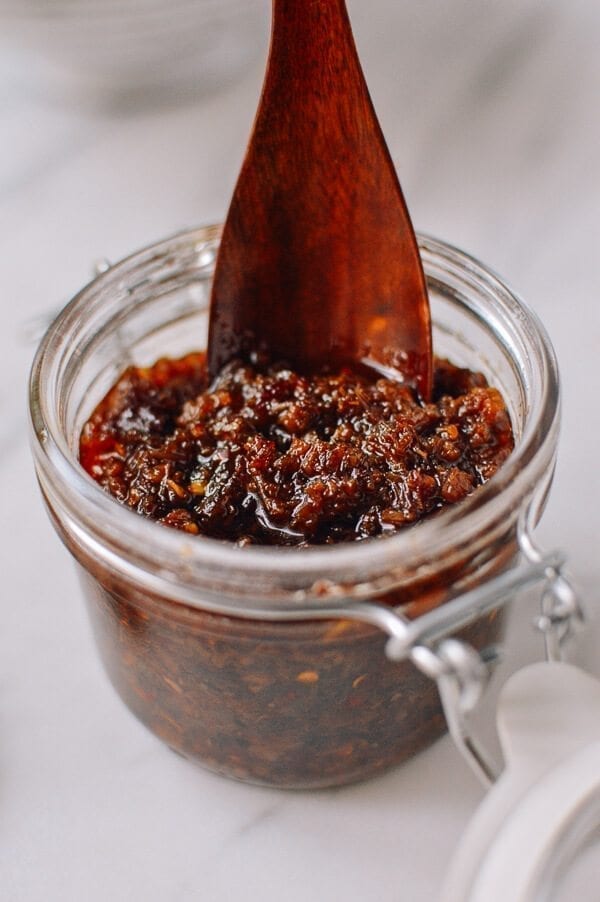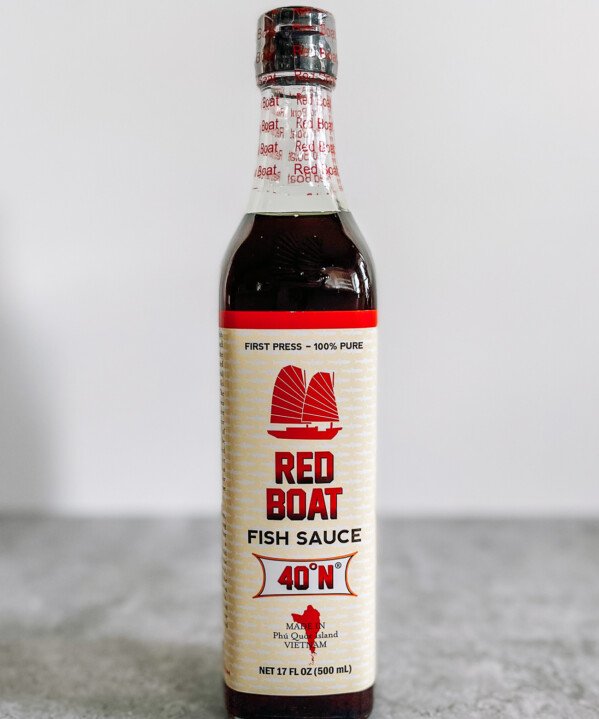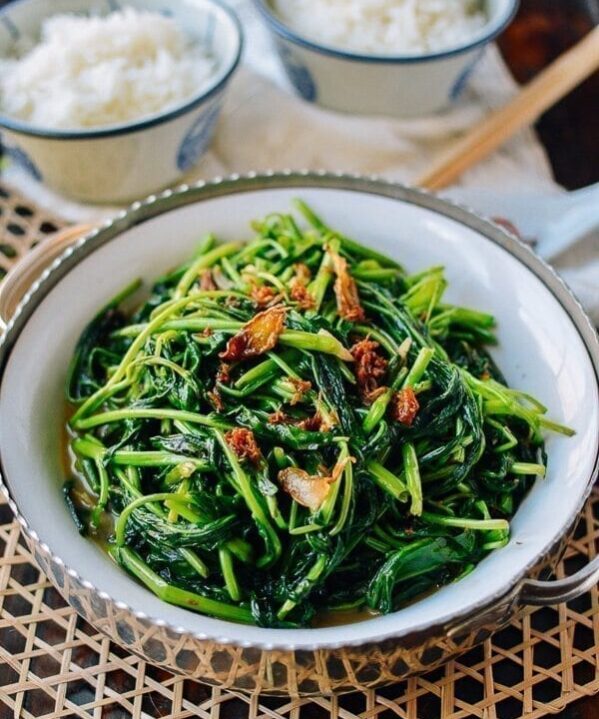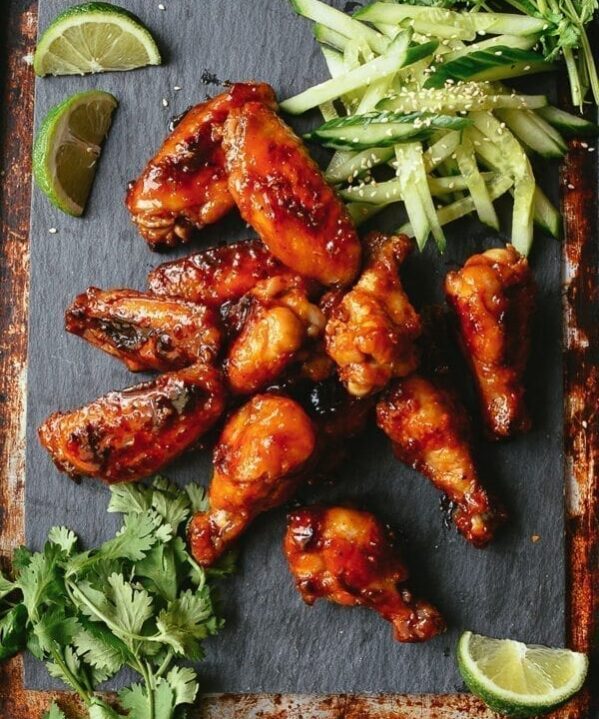Guys. GUYS.
I’m really excited to share this recipe today. Having conquered some key sauce recipes on the blog so far––like Homemade Chili Oil, Chiu Chow Sauce, Ginger Scallion Sauce––there’s been a pretty long wind-up to mastering this most beloved of condiments: XO SAUCE.
Let’s talk about it.
What Is XO Sauce?
XO Sauce is an iconic condiment hailing from Hong Kong, made from dried seafood (namely, dried shrimp and scallops, AKA “conpoy,” salty Jinhua ham, shallots, garlic, chili, and oil.
It may sound odd, but it is, in fact, epically delicious and an explosion of umami deliciousness that you’ll want to slather on literally anything and everything you can find.
Why Is It Called “XO?”
The quality and depth of flavor of XO sauce is apparent in its name. “XO” is actually a Hong Kong shorthand for high-quality, prestige, and luxury. Think about the price of fresh shrimp and scallops, and then think about taking all of that luscious seafood, drying it, and then making it into a jar of sauce.
It’s no wonder that little 8-ounce jars of this XO sauce start at around $25-30 USD and can cost much much more than that depending on the quality of the seafood used and how fancy pantsy you want to feel wherever you’re buying it.
Just 1 pound of dried medium-sized scallops or conpoy will run you upwards of $100. If you want the more succulent large dried scallops, it’ll be even more. And the Jinhua ham, made in the city of Jinhua in Zhejiang province (similar to how Champagne is only Champagne if it comes from the Champagne region of France) is pretty special too.
Given the gravitas of making this sauce–you better not mess up your expensive dried seafood haul. My mother was quick to convey the severity (read: $$$$$) of embarking on an XO journey with no clear destination in sight and literally balked and shrieked like a little mouse at how much of her dried scallop stash I used to make it.
Hence, this recipe is the result of heavy research and plenty of background incubation time wherein my brain simmered on the implications of different ratios and cooking approaches.
There’s a fairly wide range of personal preferences on sauce consistency and level of spice. Some cling to chunkier XO sauces while others (like myself) go for a finer, more “sauce-like” consistency. Ratios of shrimp, scallops, and ham can vary. Some use onions in addition to shallots, and you can see fresh chilis used instead of dried chili flakes.
An Addictive Condiment
Cooking applications for this sauce are pretty basic–the easiest and most delicious way to eat it is on a bed of plain rice or noodles, perhaps with a pile of veggies of your choice on the side.
It’s also used to stir-fry Chinese water spinach (stay tuned for that post) and as a star ingredient for Stir-fried Shrimp with XO Sauce (ditto!). Frankly, it’s so good, that we’ve found anecdotally from friends and family that it’s really best eaten simply with a clean medium like a good bowl of noodles.
And at work, my friends and I have taken to slathering it all over negotori (fatty tuna) bowls from the Japanese grocery around the corner from our office.
Basically, all you need to know is that XO sauce will take your regular, ordinary food and elevate it to heavenly, decadent godly levels of delicious.
So. Now that we all know what we’re talking about, let me talk a little bit about this recipe. I am pretty sure that this XO sauce recipe is perfect.
I don’t want to sound too full of myself, but part of the reason why this recipe makes a large batch (feel free to halve and halve again as you see fit!) is because pretty much everyone that I’ve given a sampling of this sauce to has become instantly addicted and is begging me for more.
My grandma very seriously requested more the other day–she eats it with her morning porridge every single day now, and one of my best friends can no longer imagine her life without it.
Proceed with caution, folks. Because once you’ve tasted it, there’s no going back.
NOTE: Before you begin, it’s a good idea to read the recipe in its entirety. Go into this sauce-making venture with a plan in mind!
XO Sauce Recipe Instructions
Scroll down for the full printable recipe card and instructions.
Measure out your dried scallops and dried shrimp into two separate large bowls. Add 1 tablespoon of Shaoxing wine to each bowl, and pour enough boiling water over the top to submerge the seafood. Soak the shrimp for one hour. Soak the scallops for at least 2 hours (up to 6 hours).
While that’s happening, prepare your shallots and garlic. I highly recommend using a food processor for this. Thinly slice the shallots first by hand, and then pulse into a fine dice. Pulse the whole garlic cloves until minced. Prepare the chili peppers and set aside as well.
When the soaking times have elapsed, drain the seafood. Heat your steamer over high heat, and steam the scallops and the Jinhua ham in heatproof bowls for 15 minutes. Reserve any liquid that dripped into the bowl with the scallops.
When the 15 minutes have elapsed, remove both from the steamer and let cool. Shred the scallops into threads by breaking them up between your fingers.
Using a food processor, pulse the scallops about 6-7 times, in 3 batches, until they resemble short, fine threads.
Next, pulse the shrimp about 7-8 times, or until they resemble coarse crumbs. Mince the ham by hand–best to avoid your expensive jinhua ham from resembling cat food!
Collect the water from steaming the scallops (whatever dripped off into the bowl that the scallops were in while you were steaming. The amount will vary each time you do it, and that’s fine), and mix with 1¾ cups chicken stock and 2 tablespoons brown sugar. Set aside.
In a large wok, heat your 7 cups of oil to 225 degrees F–it’s hot enough when a chopstick dipped in the oil bubbles slightly or use a thermometer for better accuracy. The oil temperature for the duration of the cooking process can vacillate between 200 and 250 degrees F, or on your stovetop, between medium-high and high heat, depending on what you are adding to the oil and how much. If your wok is too small for safe frying, use any other large, deep pot. A dutch oven would also work well.
Add all of the scallops and let fry for 5 minutes.
Next, add the shrimp. Fry the mixture for 15 minutes.
Next, add the ham and cook for an additional 3 minutes.
Add the chopped fresh red chili peppers and cook for an additional 3 minutes.
Turn off the heat. Using a fine-meshed strainer, transfer the seafood mixture to a second large skillet or wok, letting the oil drain off.
In the first wok, turn the heat on again and let the oil come back up to 225F. Add the shallots.
Let fry for 10 minutes. They should become slightly golden but not crispy.
While that’s happening, heat your second wok—with the seafood and ham in it—over medium-high heat. Add the last 6 tablespoons of Shaoxing wine, the 2 tablespoons of dark mushroom soy sauce, and the sugar/chicken stock mixture you prepared earlier. Stir to combine, and simmer to let the liquid cook off.
Next, add the garlic to the shallots and cook for 10 minutes, keeping an eye on your second wok. The garlic should get golden and slightly crisped.
When the liquid has cooked off in your seafood mixture and the shallot/garlic mixture is the correct color, carefully pour the seafood mixture from the second wok back into the first wok with the shallot/garlic mixture.
Lower the heat to medium and stir to combine. Add the fish sauce and dried chili flakes, stirring to combine.
Transfer to clean, sterile containers, and let cool on the counters before refrigerating.
You can eat the XO sauce right away or you can let the flavors meld for 2 to 3 days before digging in!
Add a small spoon of XO sauce to rice dishes (e.g., our Scallop Fried Rice), noodle dishes, vegetable dishes, etc. to your heart’s content!
How to Make XO Sauce
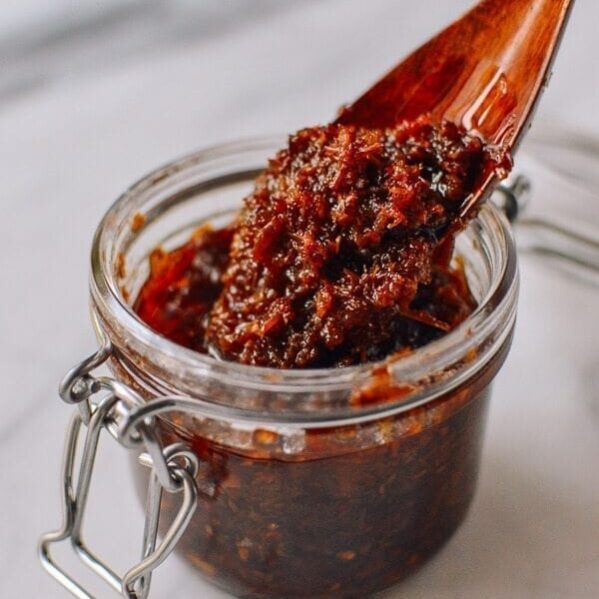
Ingredients
- 300 g dried scallops (11 ounces, mini or large)
- 300 g dried shrimp (11 ounces, larger ones are higher quality, but small ones will work fine too; don’t use the really tiny ones that are lighter in color and “feathery” in texture. Those aren’t right!)
- 8 tablespoons Shaoxing wine (divided)
- Boiling water
- 14 large shallots (finely diced)
- 3 heads garlic (finely minced)
- 10 fresh red chili peppers (e.g., Thai, bird's eye chilis, seeded and finely diced)
- 200 g Jinhua ham (7 ounces, you can also use country ham or another type of cured ham in a pinch)
- 1¾ cups chicken stock
- 2 tablespoons brown sugar
- 7 cups vegetable oil
- 2 tablespoons dark mushroom soy sauce
- ¼ cup fish sauce
- ½ cup dried chili flakes
Instructions
- Measure out your dried shrimp and scallops into two separate large bowls. Add 1 tablespoon of Shaoxing wine to each bowl, and pour enough boiling water over the top to submerge the seafood. Soak the shrimp for one hour. Soak the scallops for at least 2 hours (up to 6 hours).
- While that’s happening, prepare your shallots and garlic. I highly recommend using a food processor for this. Thinly slice the shallots first by hand, and then pulse into a fine dice. Pulse the whole garlic cloves until minced. Prepare the chili peppers and set aside as well.
- When the soaking times have elapsed, drain the seafood. Heat your steamer over high heat, and steam the scallops and the ham in heatproof bowls for 15 minutes. Reserve any liquid that dripped into the bowl with the scallops.
- When the 15 minutes have elapsed, remove both from the steamer and let cool. Shred the scallops into threads by breaking them up between your fingers. Using a food processor, pulse the scallops about 6-7 times, in 3 batches, until they resemble short, fine threads. Next, pulse the shrimp about 7-8 times, or until they resemble coarse crumbs. Mince the ham by hand--best to avoid your expensive jinhua ham from resembling cat food!
- Collect the water from steaming the scallops (whatever dripped off into the bowl that the scallops were in while you were steaming––the amount will vary each time you do it, and that’s fine), and mix with 1¾ cups chicken stock and 2 tablespoons brown sugar. Set aside.
- In a large wok, heat your 7 cups of oil to 225 degrees F--it’s hot enough when a chopstick dipped in the oil bubbles slightly. The oil temperature for the duration of the cooking process can vacillate between 200 and 250 degrees F, or on your stovetop, between medium-high and high heat, depending on what you are adding to the oil and how much. If your wok is too small for safe frying, use any other large, deep pot. A dutch oven would also work well.
- Add all of the scallops and let fry for 5 minutes. Next, add the shrimp. Fry the mixture for 15 minutes. Next, add the ham and cook for an additional 3 minutes. Add the chopped chili peppers and cook for an additional 3 minutes.
- Turn off the heat. Using a fine-meshed strainer, transfer the seafood mixture to a second large skillet or wok, letting the oil drain off so that all of the oil is left behind in the first wok.
- Turn the heat on again for the first wok and let the oil come back up to 225F. Add the shallots. Let fry for 10 minutes. They should become slightly golden but not crispy.
- While that’s happening, heat your second wok—with the seafood and ham in it—over medium-high heat. Add the last 6 tablespoons of Shaoxing wine, the 2 tablespoons of dark mushroom soy sauce, and the sugar/chicken stock mixture you prepared earlier. Stir to combine, and simmer to let the liquid cook off.
- Next, add the garlic to the shallots and cook for 10 minutes, keeping an eye on your second wok. The garlic should get golden and slightly crisped.
- When the liquid has cooked off in your seafood mixture and the shallot/garlic mixture is the correct color, carefully pour the seafood mixture in the second wok back into the main wok with the shallot/garlic mixture. Lower the heat to medium and stir to combine. Add the fish sauce and chili flakes, stirring to combine.
- Transfer to clean, sterile containers, and let cool on the counters before refrigerating. You can eat the XO sauce right away or you can let the flavors meld for 2 to 3 days before digging in!
- Add to rice dishes (e.g., our Scallop Fried Rice with XO Sauce and Crispy Garlic), noodle dishes, vegetable dishes, etc. to your heart’s content!
